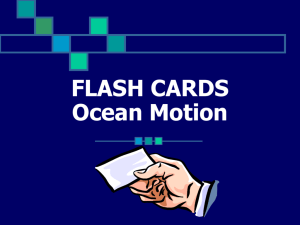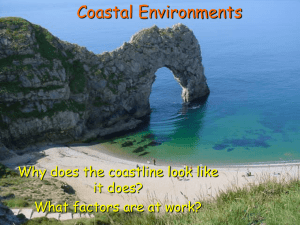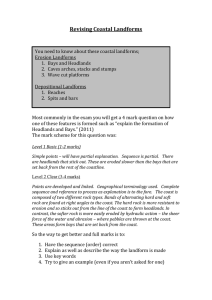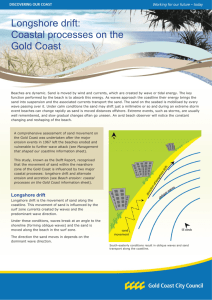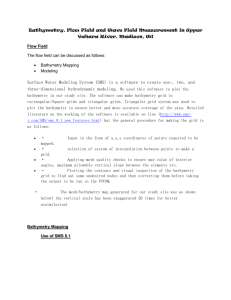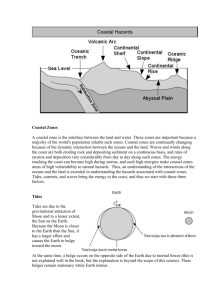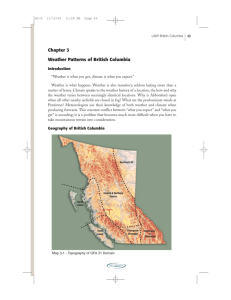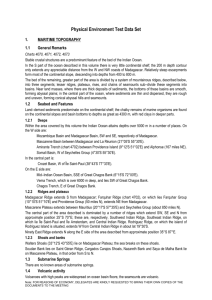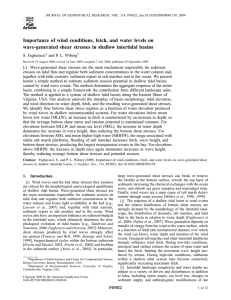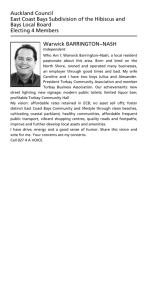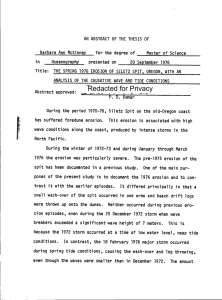48 - Cal State LA - Instructional Web Server
advertisement
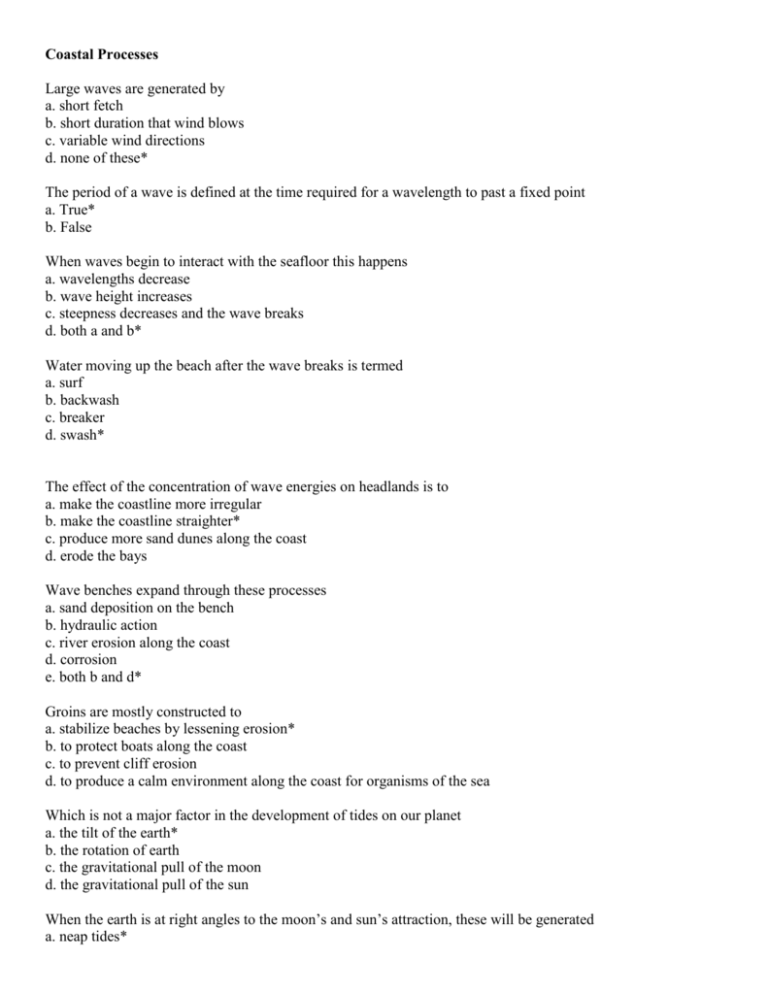
Coastal Processes Large waves are generated by a. short fetch b. short duration that wind blows c. variable wind directions d. none of these* The period of a wave is defined at the time required for a wavelength to past a fixed point a. True* b. False When waves begin to interact with the seafloor this happens a. wavelengths decrease b. wave height increases c. steepness decreases and the wave breaks d. both a and b* Water moving up the beach after the wave breaks is termed a. surf b. backwash c. breaker d. swash* The effect of the concentration of wave energies on headlands is to a. make the coastline more irregular b. make the coastline straighter* c. produce more sand dunes along the coast d. erode the bays Wave benches expand through these processes a. sand deposition on the bench b. hydraulic action c. river erosion along the coast d. corrosion e. both b and d* Groins are mostly constructed to a. stabilize beaches by lessening erosion* b. to protect boats along the coast c. to prevent cliff erosion d. to produce a calm environment along the coast for organisms of the sea Which is not a major factor in the development of tides on our planet a. the tilt of the earth* b. the rotation of earth c. the gravitational pull of the moon d. the gravitational pull of the sun When the earth is at right angles to the moon’s and sun’s attraction, these will be generated a. neap tides* b. spring tides The tidal range is usually less a. along straight beaches* b. in narrow estuaries and bays Storm surges result in part from a. strong winds associated with tsunami b. high atmospheric pressure along the coast associated with storms c. low atmospheric pressure along the coast associated with storms* d. all of these Lake waves would be largest when a. winds are strong and fetch is short b. winds are strong and fetch is long c. winds are weak and fetch is short d. winds are weak and fetch is long

